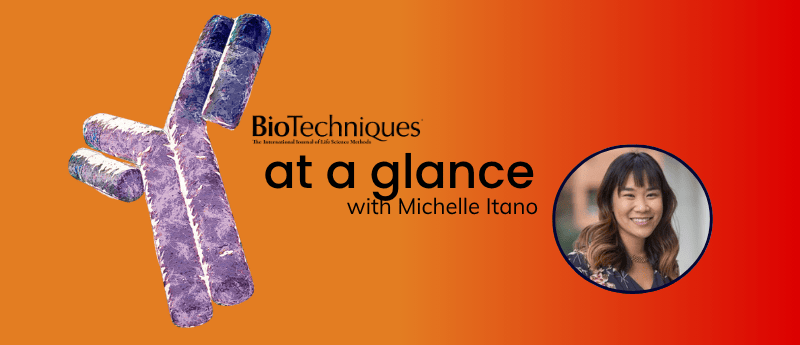The journal at a glance: Q3 highlights from our Editor in Chief

Editor-in-Chief of BioTechniques Michelle Itano (University of North Carolina, Chapel Hill, NC, USA) shares her top three articles from the last 3 months of journal issues, explaining their significance and detailing their key findings.
Optimizing chromosome yield: a comparative analysis of harvesting, preparation and waste recovery methods
The use of chromosomes is fundamental to numerous fields, including clinical diagnostics, genetics, and molecular biology research. As such, the optimization of methods for mitotic chromosome preparation to deliver a maximum yield for cytogenic analysis is of significant interest.
In this study, the authors present an optimized protocol for chromosome preparation from the HeLa cell line, exploring ways to recover chromosomes from discarded cell fractions, increasing chromosome yield. The authors also evaluated the factors that influence chromosome morphology and yield, providing suggestions to modulate these factors to deliver improvements.
The efficient and sustainable method for chromosome preparation presented also holds potential for applications beyond HeLa cells, extending to other adherent cell lines, furthering the significance of this paper.
An E. coli two-hybrid system to investigate human protein-protein interactions
The study of microbial proteins in a E. coli environment traditionally relies on methods involving the LexA-E. coli two-hybrid system. This study describes the first use of the system to study human protein-protein interactions in an E. coli environment. The authors applied the system to investigate a tumor suppressor interaction between Prostate Apoptosis Response-4 (Par-4) and Glucose-Regulated Protein 78 (GRP78).
Using this approach, they provided direct evidence of a specific interaction between the proteins, demonstrating the system’s ability to detect phosphorylation-independent interactions between human proteins. This presents an alternative to the use of eukaryotic cells, therefore bypassing the risk of interference from endogenous eukaryotic proteins. The application of the LexA-E. coli two-hybrid system in this context offers a low-cost and easy to follow approach that can be used in both teaching environments and resource-limited laboratories.
Nondestructive DNA extraction from specimens and bulk samples preserved in DESS solution for DNA barcoding
In small organisms, such as nematodes, conventional DNA extraction methods often require the removal of a substantial section of the specimen, inflicting serious damage that can lead to the total loss or destruction of the organism.
This report describes the development of a protocol for non-destructive DNA extraction from small organisms and bulk environmental samples preserved in DESS, a preservation solution commonly used to preserve DNA in biological tissue samples. This protocol enables DNA barcoding while maintaining the specimen’s morphology, making it the first protocol to demonstrate non-destructive DNA extraction directly from DESS supernatant for DNA barcoding purposes.
The method shows promise for use in taxonomic and ecological studies involving DNA barcoding, as it can be applied to specimens from a wide range of species.